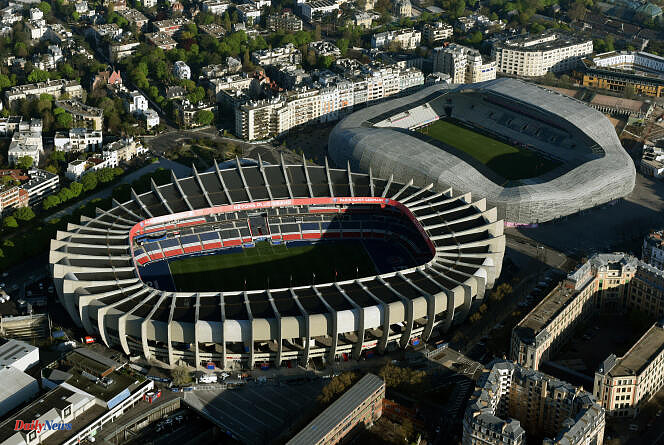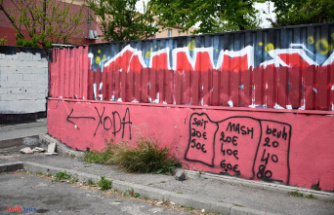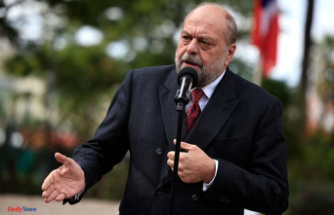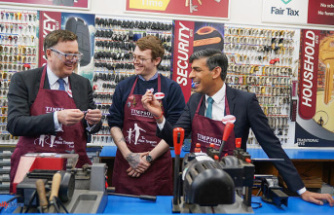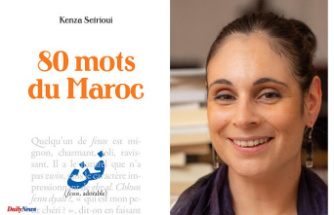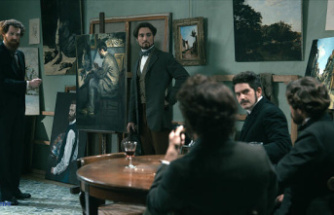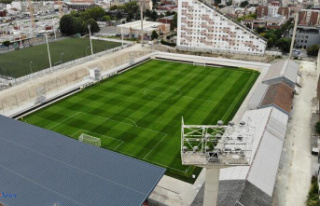There are football fans who experience a unique emotion when they enter not into a stadium, but into “their” stadium… For its faithful, the Parc des Princes provides this effect. Designed by architect Roger Taillibert in 1972, the stadium extends over the two rows of asphalt roads of the Paris ring road. “Build a stadium here? Anyone would have said “no, impossible”, marvels Alain Orlandini, biographer of Roger Taillibert – and certainly also his biggest fan. For Roger, on the contrary, it was a challenge. He draws two ellipses, not parallel, between which he positions the stands. Where the outer ellipse moves furthest away from the inner ellipse, which surrounds the field, the stands logically become higher. It’s a project that uses this site very intelligently. On this plot, we could not have had more places. »
Until then, the princes of football were rarely present in the capital. Cycling was the king sport. The stadium designed by Roger Taillibert took the place of a velodrome, designed at the very end of the previous century on the initiative of a former professional cyclist, Henri Desgrange. It is then a 666-meter lap of the track and stands that can accommodate up to 12,000 people. “A commercial and popular success,” says Julien Sorez, lecturer at the University of Paris-Nanterre and sports historian. It notably welcomes the arrival of major races, such as the Tour de France. It was the laboratory of spectator sport in the first half of the 20th century. » Such a success, in fact, that, in 1931, the track was shortened to make space for two large stands that could accommodate 24,000 spectators each. Thus, with the occupation of the turns, 60,000 people can attend the major events at the Parc des Princes velodrome. In 1948, the arrival of the Tour de France was even broadcast live on television from the Parc des Princes.
“This era marks the beginning of modern stadiums,” notes Julien Sorez. This is the moment when we divide the stands into several categories of spectators, each with its entrance, its access staircase, its toilets, its bar... The journalists have their special telephone booths, and there are even boxes in the main stand. For the first time, we are trying to channel flows and behaviors. »
“It works, and it rocks.”
In 1972, cycling gave way to football, which became the popular sport par excellence. This date marks the latest renovation of the Parc des Princes with its very first resident club, PSG, born from the merger of the very young Paris Football Club and the already septuagenarian Stade Sangermanois. The inauguration of the “new” Parc des Princes took place on May 25, 1972 during a France-USSR football match. The gauge is reduced to 48,000 spectators. “From then on, the history of the park becomes fully Parisian,” analyzes Julien Sorez. From a geographical point of view first, since the velodrome is rebuilt only in the commune of Paris, and no longer in Boulogne as well, then from a sporting point of view: we have an association between a club, a stadium, a city. »
Half a century later, it remains impossible to travel on the Paris ring road, between the gates of Saint-Cloud and Auteuil, without being strongly impressed by the giant of raw concrete, a material "still rare in 1972", according to Alain Orlandini, who also notes: “Nowhere in France have we seen this form of structural maximalism. Taillibert did not try to look pretty. But the form follows the function in such a relevant way that the project becomes visually beautiful. It works, and it rocks! »
Another innovation brought by the architect: lighting. It is integrated into the horizontal part of the concrete porticos, beams connected by cables, all around the enclosure, which project light towards the ground. Guaranteed spectacle! Author of an investigation into football ultras (Robert Laffont, 1990), Le Monde journalist Philippe Broussard is among the Park's faithful. “For any supporter, the stadium is much more than a place where you watch a match: it is a family home,” he says. We don't leave it, we come to find our loved ones there. We are nostalgic, we remember the first times, the great moments... It is a place steeped in history. »
His own history as a supporter, Philippe Broussard is sure, would end if the Paris Saint-Germain (PSG) team had to move elsewhere. A possibility. The Qatari owners have long sought to acquire the Park from Paris City Hall with the aim of expanding it, welcoming a larger audience and thus increasing ticket revenue. They say they have given up. The club is now threatening to leave the Parc des Princes for the Stade de France, or another that it would have built. And the faithful, for whom PSG without the Park would no longer be PSG, threaten their club with leaving it.
Season 3 of the “Archi interesting” podcast is produced on the occasion of the exhibition “Once upon a time the stadiums”, presented from March 20 to September 16, 2024 at the Cité de l’architecture et du patrimoine.

